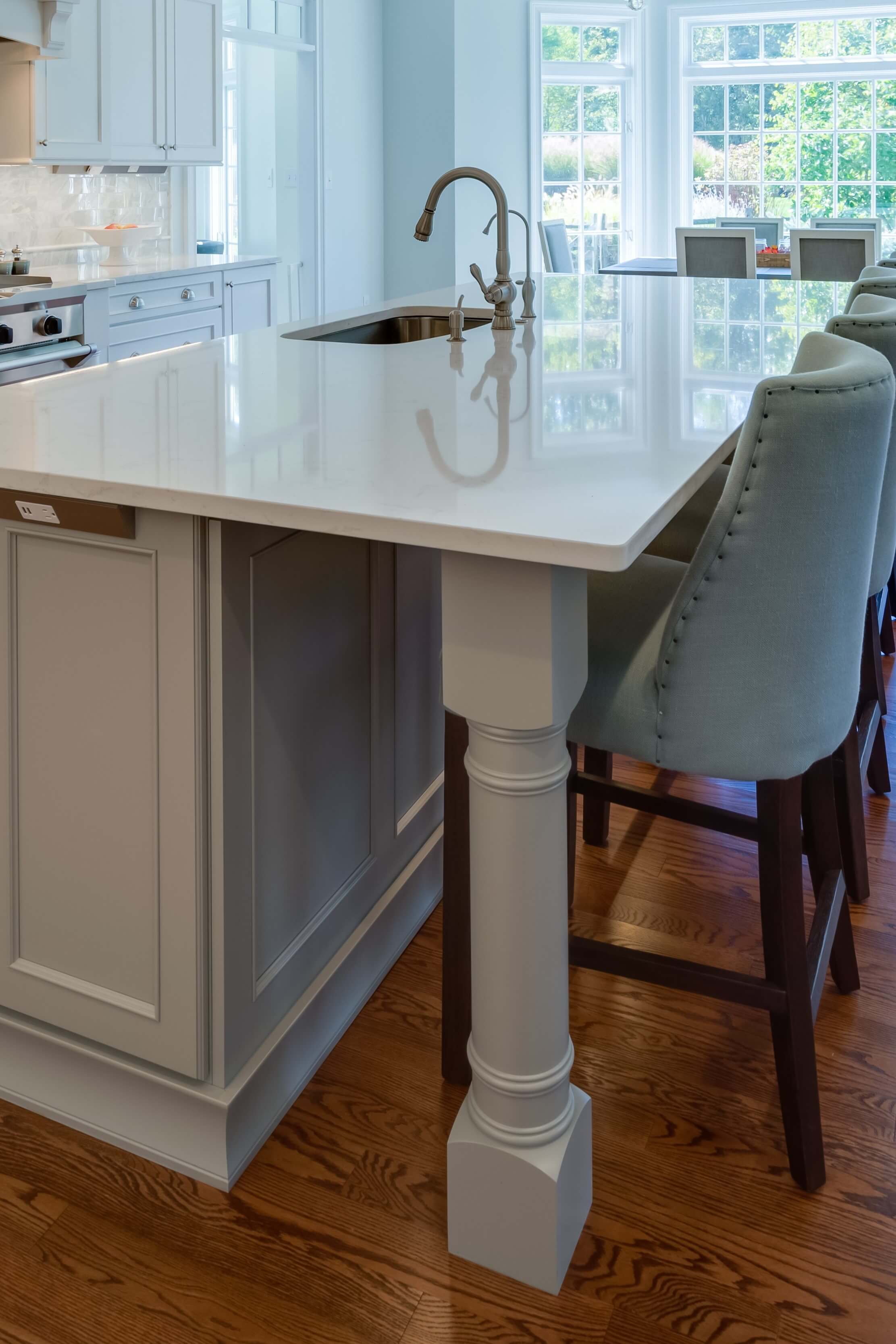A Guide to Selecting the Perfect Legs For Kitchen Area Island for Your Home
Picking the ideal legs for your kitchen island is a nuanced decision that affects both the capability and aesthetic charm of this central room. As you think about these components, it ends up being evident that the ideal legs can transform not only the appearance of your kitchen area yet also its use for years to come.

Comprehending Kitchen Area Island Legs
When selecting legs for a kitchen area island, it's important to comprehend their visual and useful duties in the overall design. The legs act as an important support system, making certain security and durability for the island, which commonly works as an office, eating area, or collecting area. The choice of product and building and construction strategy have to be robust adequate to endure daily use and prospective wear.
In enhancement to their architectural responsibilities, legs add considerably to the island's visual charm. They can boost the kitchen's design, whether via conventional, modern, or eclectic layouts. The elevation and proportion of the legs are likewise vital factors to consider; they have to integrate with the island's countertop elevation while making sure comfy seating for those utilizing the room.
In addition, the leg layout can influence the overall flow of the kitchen area. Open, ventilated leg styles can develop a sense of agility, while solid, considerable legs may share a more grounded and secure visual - Legs For Kitchen Island. Understanding these useful and visual aspects will certainly direct house owners in making informed choices that match their kitchen's layout and enhance its usability
Popular Styles and Products
The choice of legs for a kitchen island incorporates a variety of popular styles and products, each offering distinct qualities that can improve both performance and aesthetic appeals. Standard legs normally show ornate details and craftsmanship, improving classic kitchen layouts.

Elevation and Security Considerations

The legs of the kitchen island need to provide appropriate support, ensuring that the structure can hold up against daily usage without wobbling or changing. Product selection plays a substantial role in security; metal legs, for instance, often tend to use higher toughness compared to wood.
Matching Your Kitchen Area Aesthetic
Picking the ideal legs for your cooking area island goes beyond capability; it additionally plays a substantial role in the general aesthetic of the room (Legs For Kitchen Island). When choosing legs, think about the design style of your kitchen.
Color is an additional important element. Legs that match or contrast with your island's surface and bordering cabinetry can produce aesthetic consistency or striking focal factors. Matching dark timber legs with a light marble countertop can add deepness and rate of interest. In addition, think about the finish of the legs; matte, glossy, or distinctive coatings can substantially affect dig this the total feeling of the kitchen.
Installment and Maintenance Tips
Setting up cooking area island legs requires careful focus to information to make sure both security and aesthetic charm. Use a stud finder to locate wall studs if you are affixing the legs to a wall or making use of braces for included support.
When protecting the legs, utilize top quality screws and, if essential, wood glue for added toughness. For metal legs, ensure that you are making use of ideal supports and devices to avoid damage to your flooring. It is advisable to look for levelness after installation, making adjustments as needed to prevent wobbling.
Tidy the legs with an ideal cleaner, avoiding rough products that might damage the surface. By adhering to these installment and upkeep explanation tips, you can guarantee that your kitchen island legs remain both visually attractive and practical.
Final Thought
In conclusion, picking the ideal legs for a kitchen island necessitates careful consideration of elevation, security, and aesthetic compatibility. Ultimately, thoughtful leg choice plays a vital function in boosting both the usefulness and style of the kitchen area room.
When selecting legs for a cooking area island, it's necessary to comprehend their visual and useful roles in the total layout. Open, airy leg designs can produce a next page feeling of lightness, while solid, significant legs may communicate a much more grounded and secure aesthetic. The legs of the cooking area island ought to give adequate support, ensuring that the framework can withstand day-to-day usage without wobbling or moving.Installing kitchen area island legs needs cautious attention to information to guarantee both security and visual appeal.In final thought, choosing the suitable legs for a kitchen area island demands careful factor to consider of elevation, security, and aesthetic compatibility.